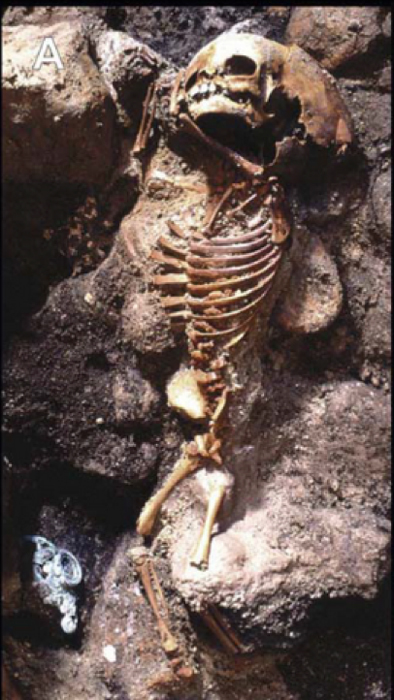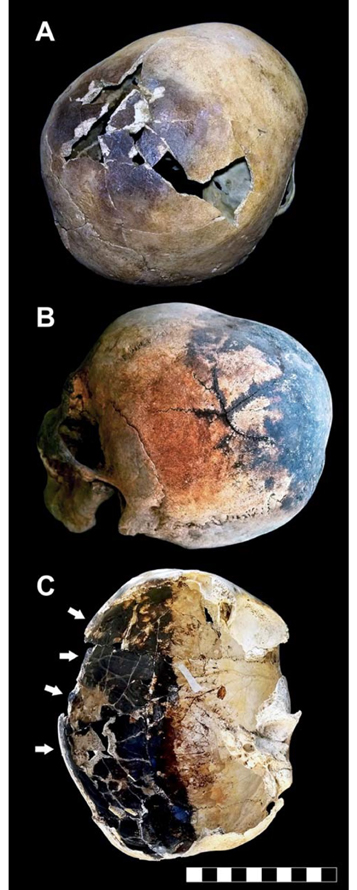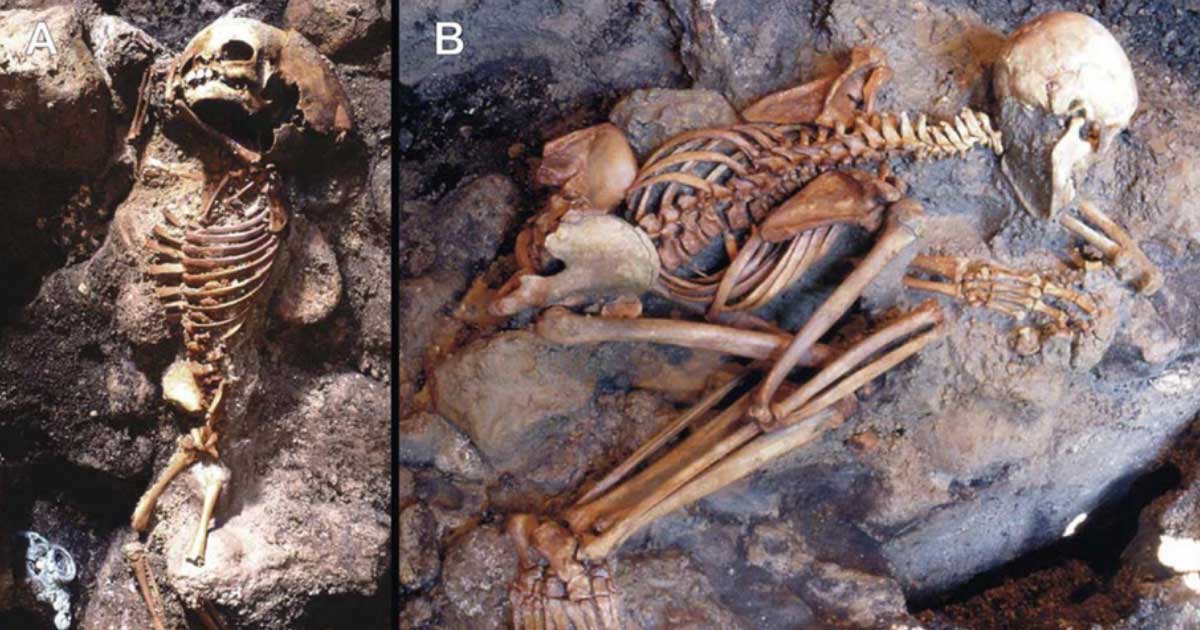An Ancient Supervolcano That “Exploded People’s Skulls and Evaporated Their Bodies” is Ready to Blow Again
In August AD 79, the somma-stratovolcano Mount Vesuvius, located on the Gulf of Naples in Campania, Italy, about 9 km (5.6 mi) east of Naples, catastrophically erupted covering the towns of Pompeii and Herculaneum. Having killed thousands of Romans over a two day period of utter carnage, a new study proves that the immediate cause of death for a group of people was “intense volcanic heat” which immediately vaporized people’s body fluids and caused their skulls to explode. And, with no cheap journalistic catastrophism intended, scientists claim she is about to erupt again.
The Iron Residue of Evaporated Blood Was A Clue
A team of Italian researchers led by Forensic Anthropologist Pier Paolo Petrone of the Federico II University Hospital in Naples, published a paper last week in PLOS One revealing his team found “numerous skeletons recovered from the waterfront chambers at Herculaneum were covered in mysterious red and black mineral residues.” Using techniques like mass spectrometry and microspectroscopy (non-destructive analysis of microscopic samples) the team hypothesized that the residues were “iron from human blood that was exposed to extreme heat.”

Red and black mineral incrustations detected in the victims' skulls. (Image: © 2018 Pierpaolo Petrone et al)
Earlier excavations in the 1980s at the “boat houses at Herculaneum,” an archaeological site discovered beneath “20 meters of volcanic deposits,” yielded approximately 140 skeletons but the mysterious “red and black residues” found encrusted on bones and within volcanic ash “were first noticed during a 2001 excavation” according to an article on Forbes.com. At that time, Petrone suggested in a Nature paper that “the body postures of the victims at Herculaneum were suggestive of thermal shock rather than suffocation by noxious gases or ash,” which was long held to be the immediate cause of death for many people at Pompeii. He added:
“The immense explosion caused flexion of body parts such as curled toes as well as charred bones” which was perceived as evidence of “instantaneous death from fulminant shock, in which vital activity ceases within a time-span shorter than conscious reaction time.”

Human victims discovered on the sea-shore area. (A) Skeleton showing "life-like" stance: a child. (Image: © 2018 Pierpaolo Petrone et al)
In this most recent paper Petrone writes that the people’s "soft tissues were vaporized" and because the temperature then fell so quickly “it inhibited the progress of the pugilistic stance and the disappearance of residual soft tissue.” The new PLOS One article also explains that “thermal injury was at least as important as asphyxia in explaining the death of the people of Herculaneum,” especially to those “on the open beach and not partially sheltered in the boat houses.”
What is more, while the residues were found on metal objects like coins, Petrone and colleagues also found them “within skulls and on other bones not near any artifacts“ The researchers said "These findings indicate that the extremely high content of iron could not be ascribed to volcanic ash or other volcanic products, suggesting that it might have originated from the victims' body fluids.”
- 2,000-Year-Old Public Laundry in Pompeii, Restored and Opened to the Public for the First Time
- The precious remains of Akrotiri, an ancient city obliterated in the great eruption of Thera
- Pompeii of the East: 4,000 year-old victims of Chinese earthquake captured in their final moments

Thermal effects in human victims' skeletons. A. Skull of an older-aged adult male showing a dark stained and cracked parietal bone. B. Skullcap affected by a “stellate” fracture consisting of several cracks which radiate from a common center. C. Exploded skull showing a partly dark stained inner table, charring of the fractured margins is evident (white arrows) (bar scale 10 cm). Image: © 2018 Pierpaolo Petrone et al
Mother Earth’s Skull Splitter
Using Raman microspectroscopy to find evidence of iron and blood, many of the bones were found to have been fractured which is suggestive of “high heat leading to exploding and cracking of the bone matrix.” Petrone also determined that "In the present work, careful inspection of the victims' skeletons revealed cracking and explosion of the skullcap and blackening of the outer and inner table, associated with black exudations from the skull openings and the fractured bone. Such effects appear to be the combined result of direct exposure to heat and an increase in intracranial steam pressure induced by brain ebullition, with skull explosion as the possible outcome." Basically, this means increasing pressure within the skull caused by intense heat caused people’s brains to instantaneously boil and their skulls to explode.
The authors of the report nodded towards, “The high-risk scenario for three million people living today close to the volcano.” So what if Mount Vesuvius were to explode again? Could that actually happen? Unfortunately the answer is yes, and an article in How Stuff Works explains that “When it comes to Mount Vesuvius it isn't a question of “if it erupts, but when.” What is more, geologists and volcanologists concede that Mount Vesuvius is overdue for an explosion and for that reason the Vesuvius Observatory monitors seismic activity and gas emissions 24 hours a day to be able to inform Italy’s people at the earliest moment possible when it will blow.
Top image: Human victims discovered on the sea-shore area of Herculaneum. Source: © 2018 Pierpaolo Petrone et al
By Ashley Cowie



















